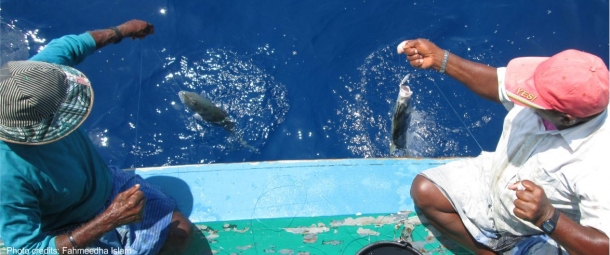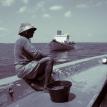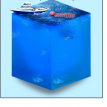
Maldives Fisheries Survey 2015
15 June 2015
Maldives Fisheries Survey 2015, an initiative taken by Reef Fishery Sub-Working Group formed under the Master Plan for Sustainable Fisheries (MASPLAN) project to understand status of different forms of reef fishery across the country, provided very valuable information on distribution of vessels and number of people engaged in different fisheries activities. The survey covered reef fishery, grouper fishery, sea cucumber harvesting, lobster harvesting, aquarium fishery as well as the two tuna fisheries; pole & line and hand-line tuna fishery.
The most significant finding of the survey was the widespread distribution of reef fishery vessels and opportunities available for them to engage in commercial reef fishing. Development of tourism industry in different regions of Maldives could have driven the expansion reef fishery to the extent seen today. Major commercial activities reported in the survey are selling reef fish directly to resort(s) or selling to buyer(s) based in the island. These locally based buyers are usually involved in salting, supplying reef fish to resorts or selling to exporters.
The survey found that grouper fishing vessels are located in two regions of the Maldives; between Raa and Baa atoll and, Alif Dhaal and Gaaf Dhaal atoll. Majority of the grouper fishing vessels and fishermen are located in the latter region. The current five major grouper fishery islands identified based on the number of vessels and fishermen involved in the fishery are; F. Bileiydhoo, R.Dhuvaafaru, Th. Vilufushi, ADh. Mahibadhoo and M. Dhiggaru.
Sea cucumber and lobster harvesting and, aquarium fishery are not very common compared with other fisheries. The survey found that people involved in sea cucumber and lobster harvesting are not usually fully committed to these fisheries but are generally reported to get involved opportunistically. Additionally, aquarium fishery was reported only from three islands. They are B. Fulhadhoo, K. Gulhi and GDh. Thinadhoo.
The survey demonstrated the distribution of present day tuna fishery fleet in the Maldives. The results indicate that tuna pole & line fishery is generally common in northern and southern atolls while tuna hand-line fishery is found mostly in central region of the country followed by northern atolls. It is also showed the reef fish is more widespread and the total catch reported in the national statistics may be grossly underestimated. Further work is required to improve reef fish logbook reporting system in place.
The information gathered from the survey is illustrated in maps. Demonstration of results in such a way makes it easy to comprehend the extent of different fisheries practiced in the country. Hence it is believed that the maps provide very crucial information to understand the national status of different fisheries, especially reef fisheries activities. It is expected that the maps from the Maldives Fishery Survey will serve the many needs of management of Maldivian fisheries.





